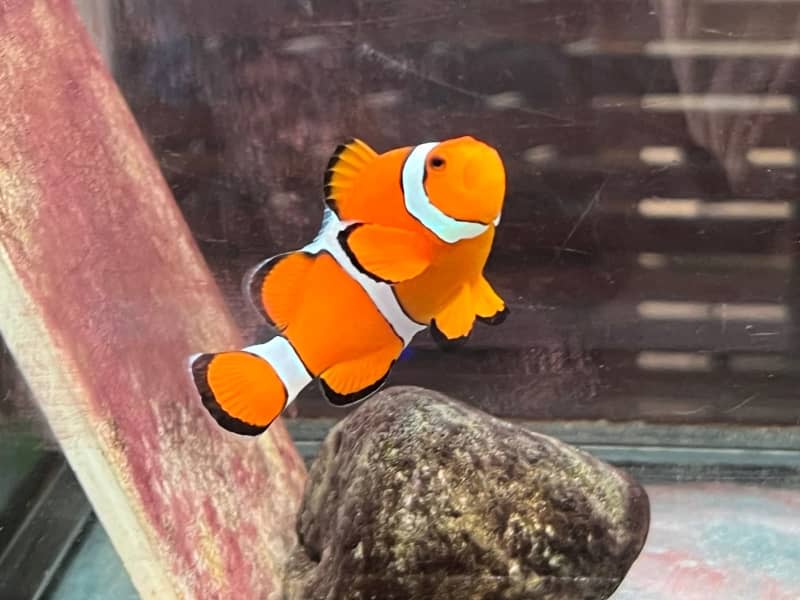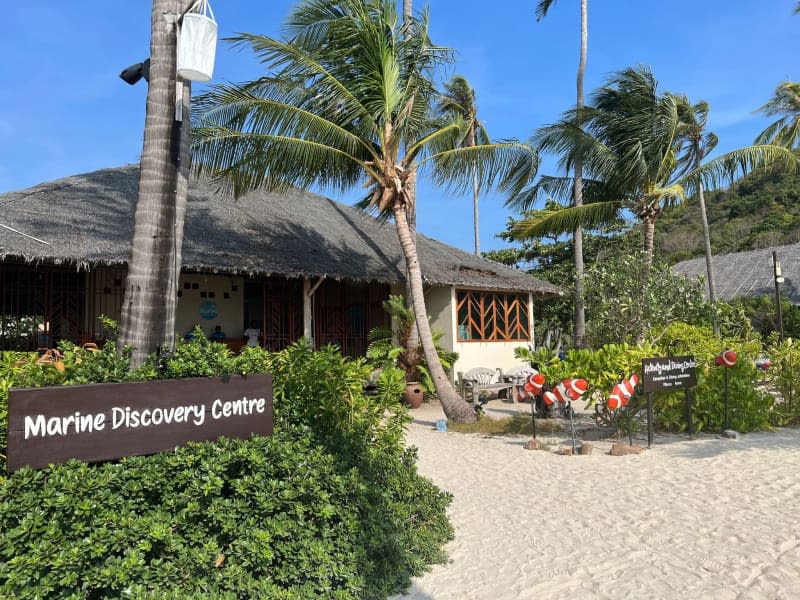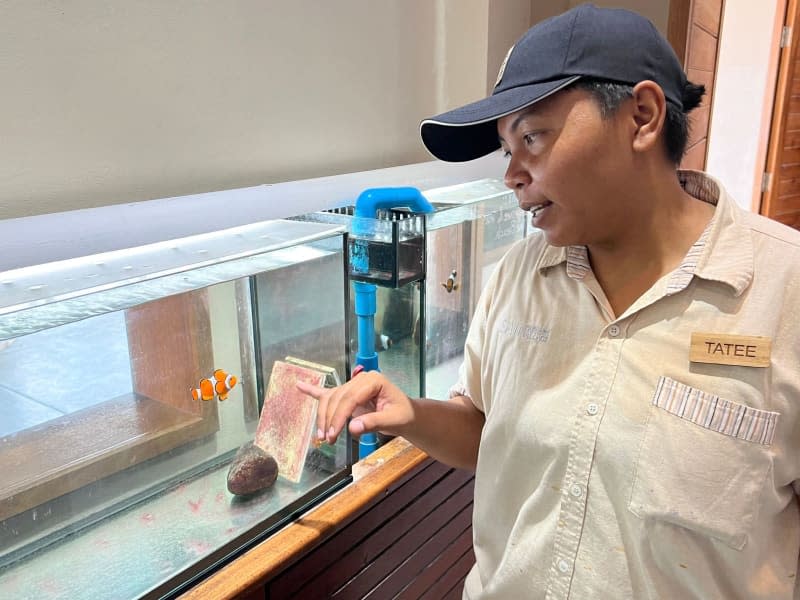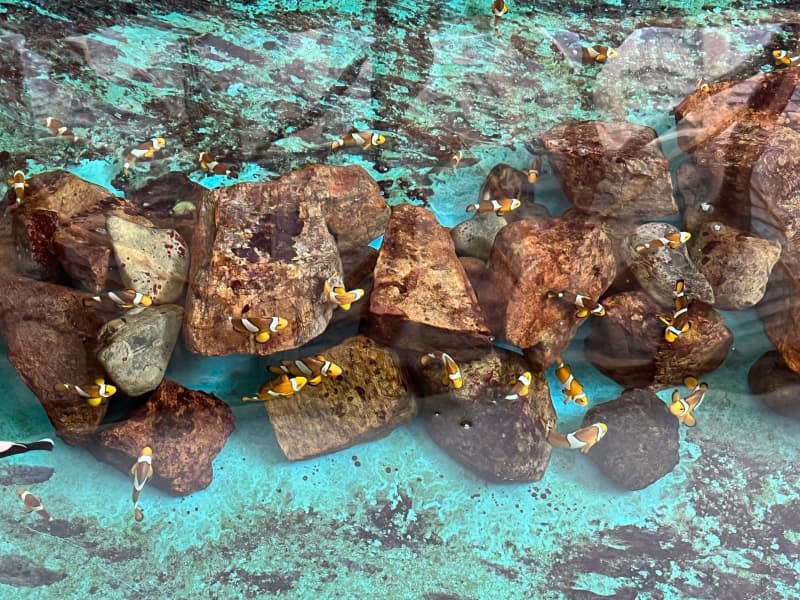Decimating Nemo: Why we are clowns for chasing Thailand's clownfish
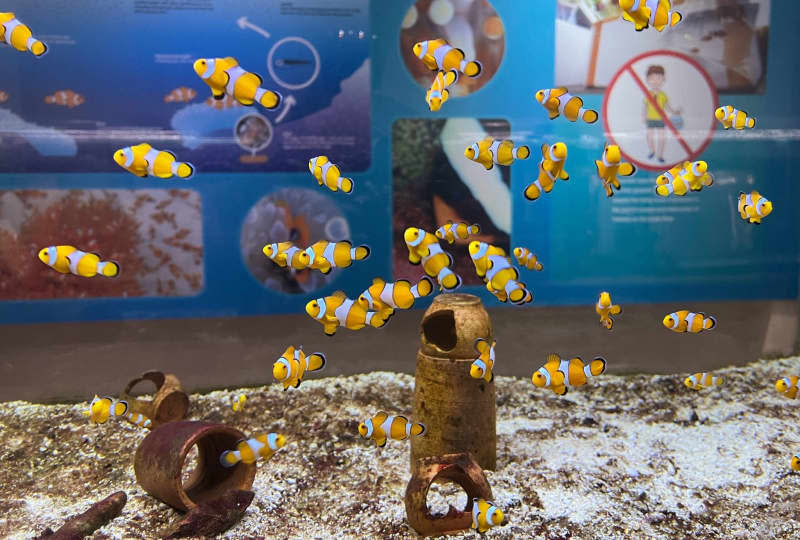
Clownfish, with their little pouty mouths, mini fins and striking orange and white colours, are victims of their own cuteness.
The world discovered the anemonefish 20 years ago and has been eagerly pursuing them ever since.
But while fans love looking at the diminutive fish, this is putting ever more pressure on the creatures themselves.
The clownfish first shot to global fame thanks to the 2003 film "Finding Nemo."
Since the film, people all over the world have been desperate to keep clownfish in their aquariums, even here in Thailand, according to marine biologist Tatee Sutadra, who runs a clownfish project at the Marine Discovery Centre at the SAii Phi Phi Island Village resort in Koh Phi Phi Don, a Thai island.
But most people don't know how to look after them properly, which makes it dangerous for the sea creatures.
Snokellers staying at the hotel can head out into Loh Ba Gao Bay directly in front of the complex and observe the miniature fish at close quarters in their natural habitat.
The marine centre is also home to a breeding centre where clownfish, or Amphiprion, are bred.
The centre aims to teach tourists, locals and young people about the fish and the threats they face. "Children are naturally enthusiastic about clownfish, but we also want to inspire them to take an interest in their protection," says Bart Callens, Regional Hotel Director of SAii Resorts.
Once or twice a year, a few juveniles of the species common clownfish - the Amphiprion ocellaris, also known as the orange-ringed anemonefish - are released into the wild in the Andaman Sea under the supervision of the national park authorities.
This is the species made so famous in the film "Finding Nemo." In all, there are around 30 species of clownfish, seven of which live in the sea around Thailand.
The animals belong to the damselfish family and come in different colours.
However, clownfish are always sensitive, says Tatee Sutadra. If the water temperature is not right, if they are kept in fresh water instead of salt water or if they are given the wrong food, they become ill or die.
Worst of all is that people are so hungry to put the clownfish in their aquariums that the price has jumped to 500 Thai baht ($15.2) per specimen. Suddenly clownfish have a price, thanks to the film.
The success of "Finding Nemo" was bad news for clownfish, the Washington Post and others observed back in 2016. "Understanding the message of most films can be a challenge, but the moral of 'Finding Nemo' seems pretty simple: Leave the fish in the sea where they belong."
Aid group organization Saving Nemo, which is dedicated to protecting the species, says more than 1 million specimens are caught in the oceans every year, decimating the population.
"Clownfish can easily be bred in captivity. Our solution is therefore to supply shops with farmed fish," says the website.
That may seem surprising, as the film focuses on freeing Nemo from captivity. In the story, the fish falls into a diver's net on his first day at school in the sea, then finds himself in a dentist's aquarium. The panic in Nemo's eyes when he hits the walls of the aquarium instead of swimming in the vastness of the ocean is one of the film's key scenes.
In their natural habitat, the creatures are cautious, peeking out from sea anemones but not too far, to avoid being eaten by hunters.
Instead they stay close to the anemones, with which they live in a unique symbiosis.
Anemones have numerous tentacles through which they release toxic substances, enabling them to drive away or even kill fish - but clownfish have a special mucous membrane that makes them immune to the toxins.
That membrane becomes even thicker over time through contact with the anemone, studies show, so the fish can seek shelter amongst the tentacles without fear.
When the Marine Discovery Centre releases farmed clownfish into the Andaman Sea, biologists usually need to help them get started. "They are first protected in the sea with a net for a month," says resort manager Peera Boonsang.
They cannot just be released, most of them wouldn't survive. They first have to get used to the new environment and the sea anemones, she adds.
However, sea anemones are increasingly threatened by global warming.
Just like corals, they are bleaching and dying due to rising water temperatures.
For the clownfish, this means that they are finding fewer and fewer hiding places and safe havens for their young. "Marine biologists around the world fear that we could lose Nemo in the wild," Saving Nemo says.
